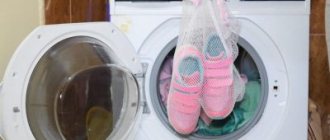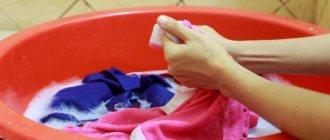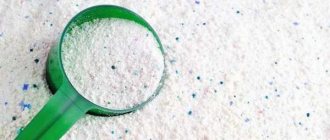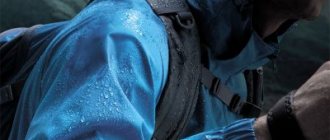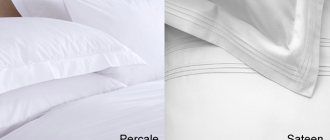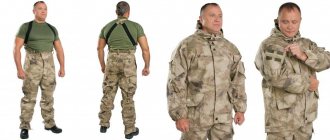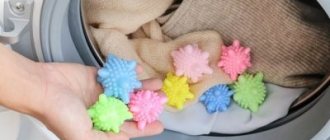Share on social media networks:
The automatic washing machine occupies one of the most important places among all household appliances in the house. It saves a lot of time spent on washing. However, in order to ensure high-quality and efficient operation of such an indispensable assistant, you should pay close attention to a very important characteristic - the maximum and minimum load of products. All recommendations indicating the weight of bed linen for washing are included in the instructions for the equipment. If these rules are not followed, the clothes will be washed poorly, and the machine itself will be subject to overload and rapid wear. In this article we will introduce you to the relative weight calculation of some products, in particular, bed linen (plaid, sheet, blanket).
Important! Of course, it is not very convenient to weigh things before washing every time, and 100-200 grams of excess or missing laundry does not play a special role. We recommend writing and sticking a table on the side wall of the equipment indicating the average weight of various items.
Weight of dry laundry for washing - table
Many washing machines can weigh things on their own, but if your washing machine does not have this function, then use the following data.
The approximate weight of the bedding set is 1.5-2 kg. More precise information is presented in the table. Weight suggested for a set made of calico type fabric:
- Children's set with one pillowcase - 1200 g.
- 1.5 bedroom - 1580 g.
- 2 bedroom - 1860
- Euro - 2340
Using this table, you can easily load the washing machine “by eye” without fear of overload. If the maximum loading weight of the washing machine is 5 kg, then you can also add a couple of pajamas or towels to any set.
Important! A satin set will weigh even less.
If you want to wash not the entire set, but its individual components, then read the following information.
How much does a double bedding set (cotton) weigh?
- Duvet cover - 800 g.
- Bed sheet - 600 g.
- Pillowcase - 200 g.
- A double bedding set weighs 1800 g.
How else can you determine the volume?
If you put too many things on, then after washing you will see large amounts of foam and traces of soap that did not have time to be washed off with water. If there are not enough things, then during operation of the washing machine there will be a strong rumble. Now let’s try to determine kilograms of linen in quantities (how much bed linen weighs):
- 4 kg of laundry is how many things:
- 2 complete sets of bed linen;
- 4 jackets;
- 7 large towels;
- 2 coats;
- 18-19 T-shirts.
6 kg of laundry is how many things:
- 4 bedding sets;
- 6 jackets;
- 12 bath towels;
- 3 jackets;
- 27 T-shirts.
Of course, the examples are given only in conditional form; in fact, the key parameter is not only the load, but also the volume of laundry. Do not forget that 100% loading is prohibited, as there is a risk of breakage. The most practical way to load a washing machine is to fill 2/3 of the drum.
Matching mode and weight
When washing things, it is very important to ensure that the weight and mode of the items being laid are correct. For example, if the washing machine is designed for a load of 5 kg, then this is the maximum weight for the “Cotton” mode.
But more gentle modes require fewer things:
- If you need to wash items made of silk or wool, their weight should not exceed 1.5 kg.
- For synthetic products, load no more than 3 kg.
All this data must be indicated in the instruction manual.
Important! The amount of laundry loaded is not the only factor that affects washing efficiency. Therefore, it is imperative to
Minimum load of laundry in the machine
Not sure what the minimum load is for your model? The amount of laundry in the drum during washing is directly proportional to the level of vibrations during the spin cycle. And this directly affects the service life of the washing machine.
Sometimes manufacturers do not indicate this characteristic, citing the fact that you can put a lot of things in the machine, supposedly to save on electricity. But not everyone cares about saving as much as the ability to quickly freshen up a couple of T-shirts, a shirt or a dress. That is why in many machines the minimum load is 1 kg.
At maximum spin speed, the distribution of laundry throughout the drum must be uniform, otherwise imbalance will occur, which can lead to serious damage.
If you do not follow the above rule, the drum will shake and vibrate. And no matter how well the automatic washing machine is installed, internal vibration will still remain. This threatens the appearance of microcracks.
Conclusion: it is better not to test the technique by washing several items whose weight does not reach 1 kilogram.
Dry weight table:
- Personal towel – 200 g.
- Bath towel - 500-600 g.
- Bath towel (terry) - 1000 g.
- Bathrobe (terry) - 1200 g.
- Tablecloth (cotton, medium size) - 400 g.
- Large tablecloth (canvas) - 1000 g.
- Kitchen towel - 120 g.
- Kitchen napkin (cloth) - 80 g.
- Women's blouse - 100 g.
- Skirt - 150-250 g.
- Dress - 300 g.
- Nightgown - 180 g.
- Pajamas - 450 g.
- Lingerie set (knitted) - 150 g.
- Women's winter jacket - 800-1000 g.
- Men's shirt - 200-250 g.
- Men's T-shirt - 220-300 g.
- Trousers - 400 g.
- Jeans - 600 g.
- Vest - 150 g.
- T-shirt - 120 g.
- Socks - 40-50 g.
- Handkerchief - 15-20 g.
- Working clothes - 600 g.
- Windbreaker - 800 g.
- Men's down jacket - 1400-1800 g.
Important! The weight indicated in the table is relative, since clothes made from different materials also have different weights, for example, a silk blouse is slightly lighter than a similar cotton blouse.
Regular clothes
Dry laundry weight chart - more to come! Every week we run the machine several times to tidy up our basic wardrobe. Want to know how to calculate the load according to the size of your everyday items?
Not a problem - below is a table that takes into account the difference in size.
| Type of clothing | Female (gram) | Male (gram) |
| Underpants | 50 | 70 |
| Bra | 80 | — |
| T-shirt | 180 | 200 |
| Sweatshirt | 400 | 500 |
| Jeans | 400 | 600 |
| Shirt | 150 | 200 |
| Trousers or trousers | 400 | 600 |
| Skirt/shorts | 250 | 350 |
| Sports suit | 750 | 1000 |
| Pajamas | 400 | 500 |
| Dress | 300 | — |
Tables of the weight of clothes and bedding sets will help even a novice housewife to understand the intricacies of the machine. Don't be afraid - a reliable assistant is at hand!
Save our mini-reminder for yourself!
Proper washing of clothes
Of course, the weight of the bed linen is very important, but washing rules are also of great importance. Here are some of them:
- Before putting your items in the wash, sort them by fabric type and color. Pay attention to the symbols on the product label, which indicate at what temperature and in what mode a particular item should be washed.
Important! We invite you to bookmark our separate article, which contains a detailed explanation of all the icons on clothing.
- Do not wash calico and silk, synthetics and wool together.
- Do not load colored and white items at the same time.
- Load different sizes of items into the machine to improve washing efficiency.
- Before loading, be sure to check your clothing pockets and fasten all zippers, clasps, and buttons.
- Do not exceed loading limits. Remember that washing machine weights are for dry fabrics, not wet ones.
- Set the correct wash cycle for each material. It is also necessary to set the correct temperature. For cotton and linen items, set the temperature to 60 degrees; wash colored and synthetic items at 30-50 degrees.
- Wash children's sheets and duvet covers (especially for newborns) at high temperatures. If the fabric is natural, it will withstand 90 degrees.
- To wash children's clothes, use special children's laundry detergents.
- Do not machine anything that is old, fragile or very small. If you need to wash such products, place them in special bags.
- Underwear with metal fittings (bras with wires) should not be machine washed.
- Do not wash clothes soiled with products containing gasoline or other solvents.
- Wash heavy items without the “Spin” function.
- The minimum loading weight should not be less than 1 kg.
Consequences of incorrect loading
The maximum weight of items that can be washed is indicated in the product data sheets.
Exceeding the norm causes dangerous consequences:
- increased load on the electric motor, which has to rotate a crowded drum;
- increased load on bearings of rotating parts of a household appliance;
- incorrect choice of washing mode;
- poor quality washing and rinsing of clothes.
The consequence of exceeding the maximum permissible load on the electric motor is overheating of the motor. The increased temperature causes overheating and gradual destruction of the insulation of the motor rotor windings - and ultimately their short circuit. It's good if it costs you to replace the engine. A short circuit in the electrical circuit in 95% of cases causes domestic fires, especially in old houses with old electrical wiring.
Under the influence of loads exceeding the design ones, the bearings of the rotating parts of the drum and the engine gradually wear out. And this, in turn, causes unacceptable vibration of the housing, which causes mechanical failure of the washing machine parts:
- hose clamps become loose;
- the material of the water supply and pumping pipes is destroyed, causing flooding of the room;
- The contacts of the electrical wiring become loose, which causes gaps in the supply of control commands, melting of the connectors and, as a result, expensive repairs.
A completely filled tank volume does not allow washing with the required amount of water - all parts of the structure are operating in the wrong mode. The laundry remains dirty and has a residue of powder that could not be removed during rinsing.
A small load causes no less harm. During spinning, things are pressed against one side of the drum under the influence of centrifugal forces, causing “mad” vibration. Its consequences are disastrous for an electrical appliance. The bearing seats are destroyed, and vibration increases with each subsequent wash.
Tips for ironing bed linen
Some useful tips for ironing bed sheets:
- All types of bedding, regardless of fabric type, should be ironed slightly damp. The exception is polyester, as it is quite difficult to wrinkle;
- Cotton and laziness should be ironed from the front with a well-heated iron. Can be steamed;
- Silk products are ironed exclusively from the reverse side. The maximum iron temperature is 110 degrees. There is no need to dampen the silk, as water may leave stains after ironing.
Additional functions
Most modern models of automatic machines contain a large set of additional functions that help solve all problems and satisfy the various requirements of housewives.
Delay mode
A convenient way to turn on the washing machine before going to work and take out the finished clothes when you come home in the evening. At the same time, they will not wait for the owner in the drum for several hours, already washed (crumpled and compressed).
You need to read the instructions for the washing machine. First we set the current time and then program it for the desired turn-on time.
Video on how to delay automatic washing
Night
When using the night mode, the sound signal is turned off, as well as the spin cycle, which is noisy and can wake up household members and neighbors.
Water level control
When monitoring the required amount of water, the machine itself decides how much liquid to pour into the drum based on the weight and volume of the load in order to better wash and rinse things.
Spin balancing
The mode ensures uniform distribution of laundry during spinning and, if necessary, slows down the rotation of the drum by adjusting the speed. A very convenient tool for heavy loads, it prevents excessive vibration and movement of the device from its place.
Water clarity control
This mode is convenient to use for children's clothing and if household members are allergic to detergents. The machine determines whether the items have been rinsed sufficiently or whether the water is not clear enough and contains soap. If necessary, perform additional rinsing.
Spin
The function allows you to simply spin out wet items by selecting the spin force (rpm). You can quickly spin out hand-washed items, as well as those that did not leave the machine dry enough.
Drain
This function allows for simple (without additional operations) removal of water from the drum. For example, when a program crashes and things are retrieved.
Rinse and drain
A convenient way to simply rinse things and drain the water. Can be used if bad powder remains on the laundry after washing and rinsing.
Disabling spin
It is necessary to turn off the spin cycle when washing many items. For example, it is recommended not to wring linen items to avoid severe creasing, which makes ironing difficult. The machine simply washes, rinses and drains the water.
Easy ironing
Things wrinkle in the drum, mainly when spinning at high speeds. This mode (anti-crease protection) makes the push-up less aggressive and reduces the drum rotation speed. The laundry wrinkles less, but is less dry. You will have to dry it yourself, but it will be easier to iron.
Foam control
Excess foam does not affect the quality of washing, but simply clogs things with excess detergents. In this mode, excess foam formed during spinning and deposited on things is removed from the drum using a special pump.
A convenient feature that allows the washing module to identify its own problems. The operation of various parts of the device is tested and a fault code is displayed. The instructions usually indicate what problem the code corresponds to and how to fix it.
Complete set of laundry facilities in a kindergarten for 130 children, Option No. 1
As a rule, kindergarten laundries have 1-2 washing machines and 1-2 drying machines with a load of 6.5-15 kg each. Such units are quite roomy and compact; in some cases, the dryer can be placed on the washing machine, in the so-called “column”, as in the set below.
| № 1 | Name of equipment | Model | Qty |
High Speed Washing Machine
Manufacturer – Asko (Slovenia) | WMC 62PG | 3 | |
Dryer
Manufacturer – Asko (Slovenia) | TDC 112 VG | 2 | |
Ironing roller
Manufacturer - Elitex (Russia) | GK-1218 | 1 |
The cost of a set of 1 washing machine, 1 dryer and 1 ironing rink is 260,000 rubles.
The cost of the complete set is 485,000 rubles.
Composition of a laundry room in a kindergarten for 200-240 children, Option No. 2
The second set is designed for larger loads, which requires more space in the laundry room based on the size of the equipment.
| № 2 | Name of equipment | Model | Qty |
High Speed Washing Machine
Manufacturer – LG Commercial Laundry (Korea) | WD 1069BD3S | 3 | |
Dryer
Manufacturer – (Korea) | TD-V1329EA4P | 2 | |
Ironing roller
Manufacturer - Elitex (Russia) | GK-1218 | 1 |
The cost of a set of 1 washing machine, 1 dryer and 1 ironing rink is 280,000 rubles.
The cost of the complete set is 588,500 rubles.
Is it possible to use household washing machines in a kindergarten?
Due to the limited funds allocated for kindergartens, the choice of equipment falls on the most budget options. But, as you know, the miser pays twice. Incompetent buyers, for the purpose of imaginary savings, purchase household washing machines, ending up in a vicious circle of endless expenses and breakdowns.
- A non-industrial washing machine is inferior to a professional washing machine in terms of drum volume, which means that to obtain an optimal result you will have to increase the number of washes. The maximum load of dry laundry in a household machine is 5-6 kg, while the load of a professional washing machine can reach 110 kg. The cycle of professional washing equipment ranges from 40-60 minutes, which is 2-3 times faster than a conventional household washing machine.
- The use of professional detergent dispensers and computer control allows for significant savings in electricity, professional detergents and water.
- A household washing machine used for other purposes is more likely to break down and fail faster. Such equipment does not fulfill the service life specified by the manufacturer.
- The use of a household washing machine in an industrial environment, unlike professional equipment, does not provide warranty service. In the event of a breakdown, all costs are paid independently.
Obviously, professional equipment wins in all respects. The dilemma of “domestic or professional machines” has been sorted out. Then the next question arises: how to choose a washing machine to suit the parameters of a particular kindergarten?
In preschool institutions, the following types of linen must be washed: bed linen, towels, cloth bags and cloth bibs, as well as staff uniforms (kitchen staff clothes, staff robes). To make the optimal choice of equipment, you need to know how much laundry passes through the laundry on average, how many workers service it, and what requirements are imposed on the quality and time of washing.
Washing features, depending on the type of fabric
The washing mode directly depends on the type of bed linen fabric. Therefore, it is very important to know and always adhere to the rules listed below.
Linen and cotton
Both linen and cotton bed linen can be washed at high temperatures – up to 90 degrees. This is the main feature of such fabrics.
Very dirty white items can also be boiled when washed by hand. This heat treatment can only be carried out with white bed linen; colored linens can be washed at a temperature of no more than 60 degrees.
Good to know ! To remove any stains on cotton or cotton linens, soak the items for 20-30 minutes before washing. Linen from these fabrics can be spun at maximum speed.
The choice of washing powder is a very important point. White fabrics should be washed with substances that contain bleach. It is optimal if it does not contain chlorine.
Colored bed linen should be washed with special powders. Moreover, when adding powder, the thought “the more the better” is bad. If there is an excess of the substance, it simply cannot be rinsed completely.
Satin
This fabric is a cotton fabric. When forming it, the threads were intertwined in a special way to make the linen more delicate and somewhat silky. Also, it is stronger and more durable - it can withstand up to 400 washes.
When choosing a temperature mode, you should set it to no more than 60 degrees, and spin to medium intensity. If powders with active additives are used, the optimal temperature will be 40 degrees.
It is better to use liquid gel powders as a cleaner, which will wash the fabric more gently. Also, the liquid substance rinses out better and can be applied to the fabric before washing if there are noticeable large stains.
Silk
This fabric is very delicate and requires the same treatment.
It is better to choose the “Silk” or “Delicate” washing mode. They will ensure the optimal temperature - 35-40 degrees. At the same time, the drum will spin at slow speeds - this will preserve the fibers of the fabric.
Silk bedding can also be washed with liquid substances. You can add conditioner. There is no need to turn on the spin cycle.
Silk acetate
It has a lot of differences from ordinary silk. This fabric is synthetic and has much worse characteristics than natural material. Therefore, such linen can only be washed on a delicate cycle.
Acetate fabric does not tolerate alkali and acids, and is also afraid of elevated temperatures. Therefore, it is better to pre-shape baby soap and wash such items at temperatures up to 35 degrees.
Boiling is generally detrimental for these synthetics. It is also not recommended to unscrew it, as it can damage the fibers. The best option is to roll it in a terry towel and squeeze it lightly.
If washing by hand, then add a little salt to the basin with water, which will need to be dissolved in advance. 1 tbsp. l. will be quite enough.
Polyester
Also applies to synthetics. It is very often used when sewing bed linen due to its some positive properties. Cotton fibers are often added to polyester fibers to make the product more durable.
The optimal temperature for washing this laundry is 35 degrees. If the product has moderate “severe” dirt, then you can even set the “Quick Wash” mode and set the temperature to 40 degrees. There is no need to twist polyester.
